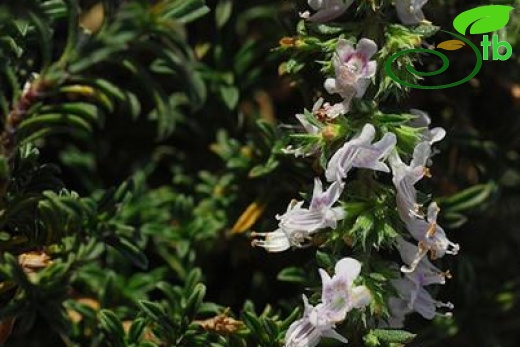Thymus sipyleus
Thymus sipyleus
Sipil kekiği
Low woody and freely branching subshrub forming dense cushions. Flowering stems 1-7 cm, erect, hairy all round with mainly short reflexed hairs; internodes usually shorter than leaves; axillary clusters of-small, ovate, tightly imbricate decussate leaves present. Cauline leaves 3-6 mm, ovate to lanceolate, obtuse, ± carnose; oil dots usually absent, or few above; lateral veins joining to form a marginal thickening, best developed in leaf-like bracts. Bracteoles usually 1-1.5 mm, usually longer than pedicels. Calyx 3.2-3.8 mm, usually green, ± campanulate; lips of ± equal length and equalling tube; upper teeth 0.5-0.9 mm. Corolla white, sometimes pink, 5-6 mm. Fl. 5-8. Mountain steppes, rocky slopes, 400-2700 m.
1. Middle cauline leaves lanceolate to almost linear, more than 3 x longer than wide, often ± flat; lateral veins mostly 2 pairs, not prominent;infloresence capitate to somewhat elongated, often with many-flowered verticillasters subsp. rosulans
1. Middle cauline leaves ovate-elliptic to ovate-lanceolate, to 3 x as long as broad, often recurved and ± keeled; lateral veins 3 pairs, prominent; inflorescence a compact head or only weakly differentiated from vegetative shoot, usually with 2-flowered verticillasters .subsp. sipyleus
2. Leaves glabrous to shortly puberulent above, glabrous beneath ......var. sipyleus
2. Leaves pilose on both sides .........................var. davisianus


